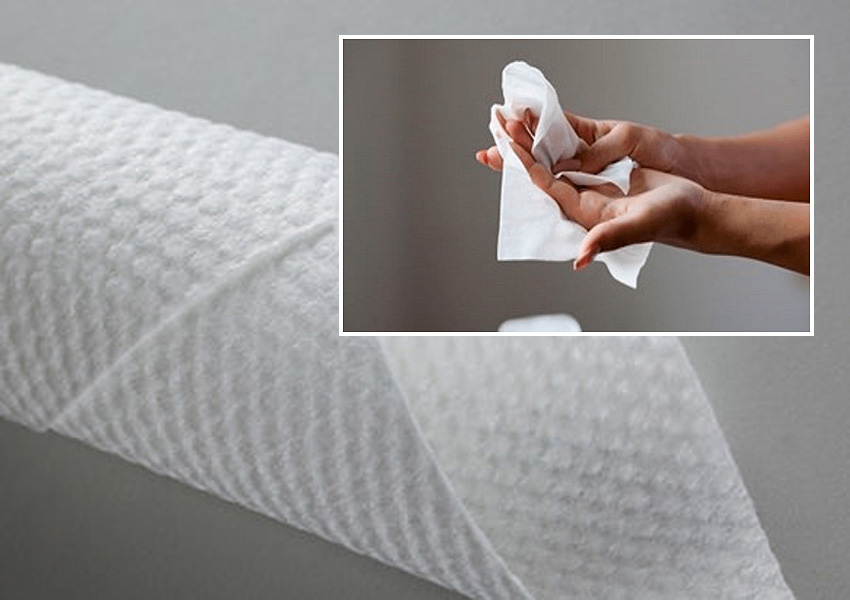Publications
Last
Advertisement
Partners


Air-through bonding: production parameters vs. product properties

Non-woven fabric "air-through" is a three-dimensional porous fabric consisting of hot-melt fibers (two-component, a mixture of fibers with different melting temperatures) as the main material. Due to its characteristics, it is widely used in medicine and hygiene (women's and children's hygiene items), filtration (masks, air filters) and thermal insulation.
The principle of production of nonwoven fabric "air-through" is that hot air penetrates through a loose fibrous primary web (usually in the range from 20 to 200 g/m2) formed on a carding machine, melts a thermoplastic fiber with a lower melting point (or the shell of a two-component fiber) and ensures the fastening of the web at the intersections of the fibers, thus forming a non-woven material of a certain thickness and stable structure. The thermoplastic fiber is usually fibers with a low melting point (polyethylene, polypropylene, polyethylene terephthalate, etc.) and/or two-component fibers. Two-component fibers «shell-core » can also be mixed with monopolypropylene fibers «trilobal» or two-component splitting fibers in order to improve the softness and other tactile properties of nonwovens. The fibers of the primary web themselves are binders with respect to each other, which are glued together under the influence of the temperature of the hot air flow. Since no chemical binders are used in this process, it is considered environmentally friendly.
In this article we will consider the influence of parameters (temperature, time spent in the furnace) of the technological process "air-through" on the quality of the final product. To do this, let's imagine. that we are participating in a production experiment in which two types of raw materials are used - two different two-component fibers (polyethylene/polypropylene), one 2.22 dtex* 38 mm, and the other 1.67 dtex* 38 mm. Both of them are a type of two-component fiber "shell-core". As a shell, we have polyethylene with a melting point of 125-130 °C, and as a core, polypropylene with a melting point of 165-170 °C.
The experiment is carried out on a standard production line (fiber loosening, mixing, feeding, carding, hot air bonding, cooling, stretching, compacting and winding), which provides a coefficient of variation in the density of the primary web within 5% and a constant uniform temperature throughout the working area of the furnace. Two types of raw materials are mixed in a ratio of 1:1 and enter the carding machine to form the primary web. Then the cloth is fed into a special furnace on a perforated heat-resistant conveyor belt, where the process of fastening the cloth with hot air flows takes place. The furnace temperature and the belt speed are regulated in order to achieve optimal values for melting the fiber shell (PE). Melting, it forms melt droplets that bind the fibers along the entire cross-section of the web, thus creating a non-woven material bonded by hot air.
Now let's look at how a hypothetical change in the parameters of the production process will affect such characteristics of the material as thickness, tensile strength, liquid permeability.
Thickness
- as the density of the fabric increases, the thickness also increases;
- with an increase in the temperature of the hot air, the thickness of the fabric tends to decrease, since with a further increase in temperature, the area of the melted and glued sections of the fabric increases, which, with subsequent stretching and compacting, makes the nonwoven more dense.
Tensile strength
- with a higher weight of the web, the tensile strength of the web increases accordingly, both in the longitudinal and transverse directions;
- the strength of the web in the longitudinal direction exceeds its strength in the transverse direction, which is explained by the production process in which most of the fibers are laid in the longitudinal direction;
- with a corresponding increase in temperature, the tensile strength of the material in the longitudinal and transverse directions increases;
- with an increase in temperature in the range from 123 °C to 127 °C, the tensile strength of the material increases faster than with an increase in temperature in the range from 127 °C to 139 °C. This is due to the fact that the initial melting point of the two-component fiber shell (PE) is in the range of 125°C-130°C, and when the temperature reaches this range, the strength of the material increases at a higher rate.
Liquid permeability
- the time of passage of the liquid increases with the increase in the grammage of the web, since with a larger mass the web becomes thicker and acquires greater porosity, which lengthens the time of passage of the liquid through it, so it must pass through all the pores;
- for the same tissue sample with the same weight, the time of fluid passage through it for the first, second and third times gradually increases;
- with a higher web weight, the reverse flow of liquid increases accordingly. This is due to the fact that with a high mass and thickness, more liquid remains in the web, which causes a greater return flow.
Summary
With the same production process, the thickness of the web increases along with an increase in its density. When the density of the material remains unchanged, a higher temperature will lead to a decrease in the thickness of the material.
The mass of nonwoven fabric has a huge impact on its strength. With the same production parameters, an increase in temperature will increase the tensile strength of the material in both longitudinal and transverse directions.
The mass of nonwoven fabric is an important factor affecting the permeability of the liquid and the amount of backflow. With increasing mass, the time of passage of the liquid and the volume of the reverse flow of the liquid respectively increases. Thus, reducing the weight of nonwoven fabric is one of the solutions to increase the comfort and absorbency of nonwoven fabrics.












